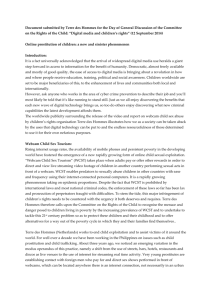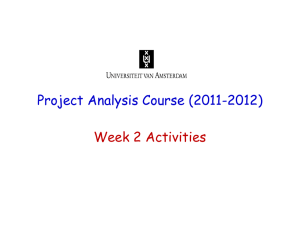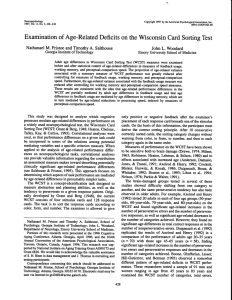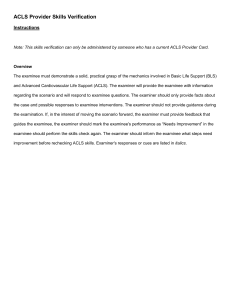M-WCST - Psychological Assessment Resources, Inc.
advertisement
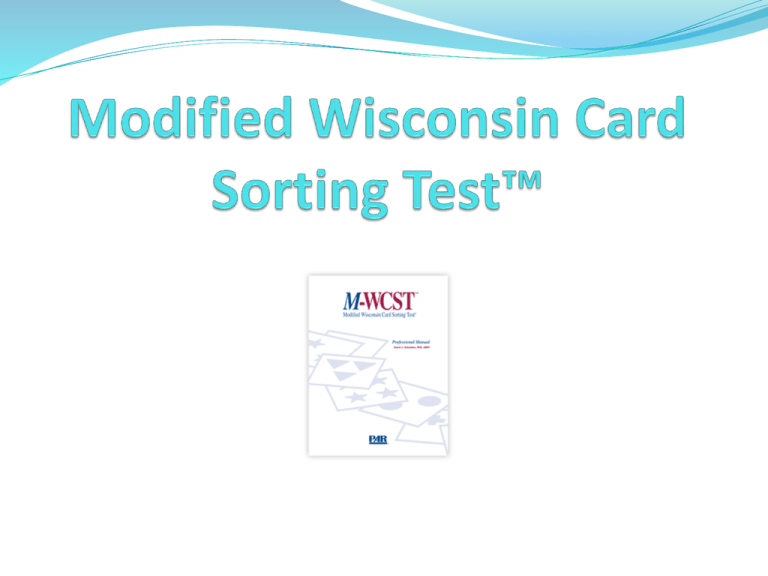
Psychological Assessment Resources, Inc. Review of WCST 128 response cards four stimulus cards examinee instructed to match each of the cards to one of the key cards examinee told whether answer is right or wrong but is not told the sorting principle Sorting category is changed without warning and the administration includes six sets of three possible sorting categories Variations of the WCST Several variations in administration and scoring of the WCST include modifications to the stimuli on the cards, card order and number of cards. One version follows the same administration and scoring procedures but utilizes only half of the response cards. (WCST-64) Another version, the Modified Wisconsin Card Sorting Test (M-WCST), was originally introduced by Hazel Nelson (1976). This version incorporates modifications to the stimuli and procedures. Overview of the M-WCST Eliminates cards that share more than one attribute with a key card Examinee determines the order of the sorting principle Examiner tells the examinee that the rules have changed and instructs him or her to “find another rule.” Why Modify the WCST? It saves time. It has the potential to be a better measure because it does not have the confusing scoring issues of the WCST and the WCST-64 Instructions are easier to understand and less frustrating for those with cognitive impairment It is easier to score. Is the M-WCST clinically sensitive? The M-WCST is equally as sensitive as the WCST, if not more sensitive, to executive dysfunction in individuals diagnosed with schizophrenia. Rhodes (2004) found that the M-WCST showed greater sensitivity than the WCST to age effects on number of sorting categories achieved by older adults as compared to younger adults. Van Gorp et al. (1997) concluded that the M-WCST and WCST showed similar clinical sensitivity to cognitive dysfunction. Administration Card set up is the same as for WCST. Examinee will determine the order of the rules. Administer until they sort all categories (for each category the examinee must have six consecutive right responses) or until he or she has used all of the cards.
